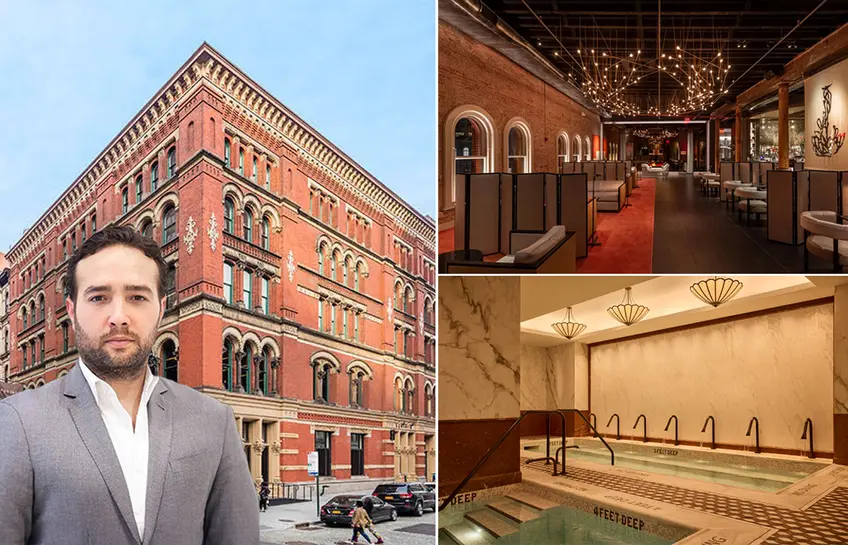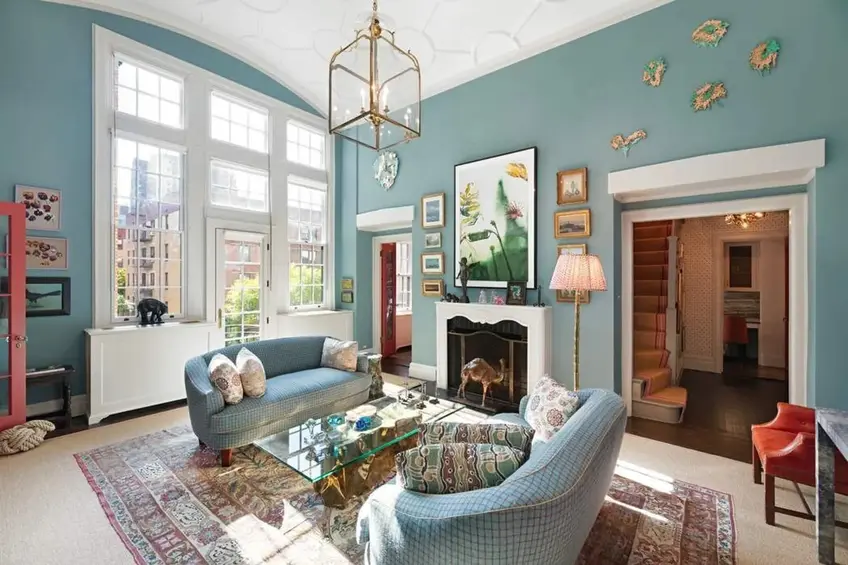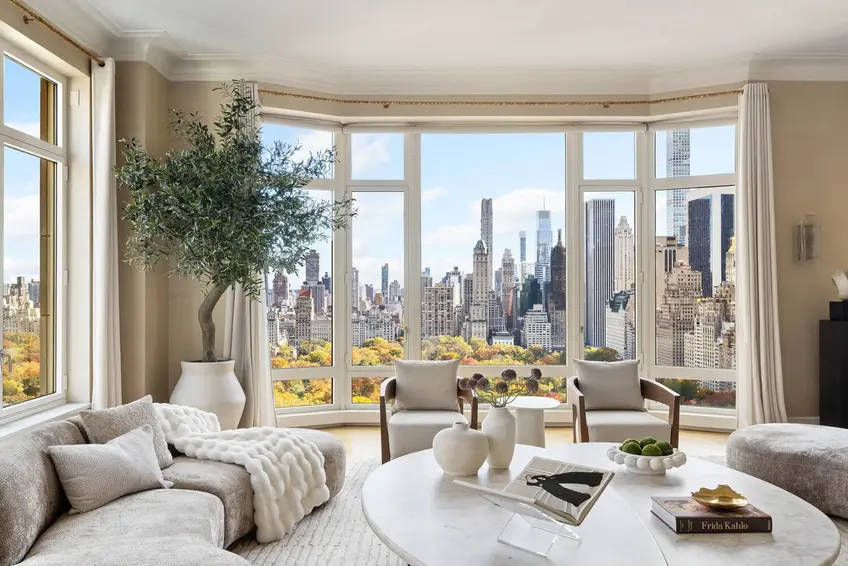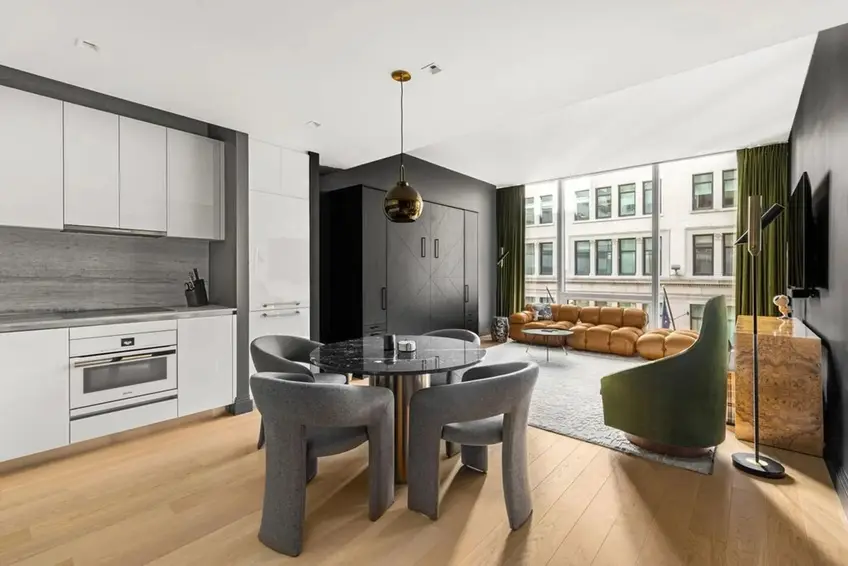Market Insight
Over the past decade, private members clubs have quietly reshaped New York’s social, cultural, and professional landscape. Once niche and discreet, they are now powerful engines of networking, dealmaking, and community building, often occupying architecturally significant buildings and navigating...
Christmas and New Year's are only a two weeks away, and there are fewer open houses this weekend compared to other times this year. However, thousands of listings remain on the market, and people are still on the move, including families with young children who wonder how Santa will find them wit...
In the third quarter of 2025, Manhattan recorded just over 2,500 signed residential contracts: 47% for condominiums, 48% for cooperatives, and the remainder for condops and townhouses. If all sold at their last asking price, total contract volume would reach approximately $5.2 billion. The overal...
On December 9, a four-alarm fire gutted 201 West 107th Street, a prewar residential building located in close proximity to Columbia University. The fire broke out on the top floor, causing part of the roof to collapse; a parapet wall on the left side of the building also caved in. The apartments ...
Sunken living rooms are a distinctive feature in many New York City apartments, with origins dating back to 1927 when Kansas-born architect Bruce Goff introduced the idea in an Art Deco-style house with a “conversation pit.” This design element, which had never been seen before, quickly gained po...
In December 2025, luxury gym Life Time signed a lease for a new location at 175 Third Street in Gowanus. It will measure over 85,000 square feet and be topped with a year-round rooftop beach club with pools for hot and cold use, saunas, and a bar. Interiors will include a "wet suite" with saunas ...
Life's a beach, or so they say. Going on vacation is dreamy but re-entry into “real life” can be bumpy. Branded residential projects are popping up across the world and can fuse these two worlds so everyday life feels like a vacation.
Update: December 10, 2025
We’ve updated this feature following the passing of Robert A.M. Stern at age 86. Stern, who founded RAMSA in 1969 and helped redefine New York City’s residential architecture, left a lasting legacy through his buildings, his teaching, and his lifelong dedication to thoug...
From December 2-9, 2025, about 200 condos, co-ops, condops, and townhouses throughout New York City experienced price reductions. While these are more price cuts than last week, they come at a time when sales listings are down in New York City, to fewer than 7,600 now as compared to over 9,000 in...
About 100 years ago, buildings full of one-room "efficiency apartments" went up to accommodate an influx of single people moving to New York City. This was around the same time wealthy artists' families were building separate studios for them to live and create in, albeit often with multiple room...
In a city defined by its strict grid and anxious vertical rise, Frank O. Gehry’s contributions to New York remain unmistakably his, yet distinctly shaped by the city’s character. Of his two buildings, one channels his signature crushed-steel dynamism into a soaring high-rise, while the other glow...
On the week ending December 5, 2025, the city recorded residential sales that took place around the Thanksgiving holiday. This is the likeliest explanation for the week-over-week dip in both the number of Manhattan sales recorded and the aggregate dollar amount.
More In Market Insight
-
6sqft (our blog)
- From Real Estate Trends Whole Foods to open first Queens location in Ridgewood
- From Architecture And Design Coney Island boardwalk to get $1 billion revamp
- From Distinctive Homes For $6.75M, everything you’d want in a Park Slope brownstone
- From History 10 ‘secrets’ of Gracie Mansion
- From Real Estate Trends Manhattan median rent prices set new highs in November, reaching nearly $4,800/month
-
Get To Know
- From Get To Know The Big Five of 2025: The NYC real estate trends of the year Friday, December 12, 2025
- From Get To Know Homeowners insurance in NYC: 6 common questions and answers Thursday, December 11, 2025
- From Get To Know Inviting NYC apartments for sale with sunken living rooms from $215K Thursday, December 11, 2025
- From Get To Know Elegant New York City residences designed by Robert A.M. Stern Architects Wednesday, December 10, 2025
- From Get To Know The Future of Living: Designer smart homes in prewar NYC buildings Monday, December 8, 2025
-
Rental Building News and Offers
- From DUMBO NYC buildings with Life Time as 1,000-unit Gowanus development moves forward Thursday, December 11, 2025
- From Murray Hill The Lotus: Eco-friendly Murray Hill rental gears up for leasing launch and affordable lotto Monday, December 8, 2025
- From Midtown West 18W55 brings high-end rentals with seven floors of amenities to Midtown's Plaza District Friday, December 5, 2025
- From Astoria NYC's newly passed housing proposals + 10 newly proposed rentals with affordable housing Tuesday, December 2, 2025
- From Greenpoint The Dupont: Waterfront Greenpoint tower offers 2 months free rent as it unveils amenities and hits 90% leased Thursday, November 6, 2025
-
Market Reports & Research
- From Monthly Market Reports NYC’s top-selling buildings: Downtown deals drive Q3 2025 as outer boroughs gain ground Wednesday, October 29, 2025
- From Monthly Market Reports Manhattan’s market held firm this summer, except in these price-dropping neighborhoods Friday, October 10, 2025
- From New Developments NYC's best-selling residential buildings of 2025 and their availabilities Wednesday, July 23, 2025
- From New Developments NYC's most expensive neighborhoods to buy a condo or co-op Tuesday, March 4, 2025
- From Monthly Market Reports CityRealty's Q3 2022 Manhattan Residential Market Report + Best-Selling Residential Buildings Wednesday, December 14, 2022
-
Great Listings
- From Great Listings INTERVIEW: Brandon Charnas on Zero Bond and the rise of New York’s private clubs Friday, December 12, 2025
- From Great Listings Open Houses: NYC apartments with fireplaces for Santa to sneak in Friday, December 12, 2025
- From Great Listings The Big Five of 2025: The NYC real estate trends of the year Friday, December 12, 2025
- From Great Listings Inviting NYC apartments for sale with sunken living rooms from $215K Thursday, December 11, 2025
- From Great Listings NYC buildings with Life Time as 1,000-unit Gowanus development moves forward Thursday, December 11, 2025
-
Carter's View
- From In The Details NYC Brutalism: The good, the bad, and the ugly Thursday, May 15, 2025
- From Behind The Buildings One Hundred Barclay: A Monument of American Progress in Architecture Friday, January 3, 2025
- From In The Details Iconic NYC Holiday Locations Tuesday, December 24, 2024
- From Behind The Buildings As the Waldorf Astoria prepares for new chapter, revisit the legendary history of Manhattan's greatest Art Deco hotel Tuesday, December 17, 2024
- From Behind The Buildings Keeping out the masses, keeping in the few: NYC apartment buildings with grand gated entrances Tuesday, December 10, 2024














 6sqft delivers the latest on real estate, architecture, and design, straight from New York City.
6sqft delivers the latest on real estate, architecture, and design, straight from New York City.
